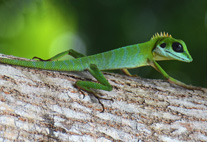Abstract
This study is a catalogue of Dictyoptera (Mantodea, Isoptera and Blattaria) from five Eastern Mediterranean countries (Syria, Lebanon, Turkey, Iraq and Jordan). There are 75 species of Dictyoptera known to occur in these countries. These species belong to 15 families (eight of Mantodea, four of Isoptera and three of Blattaria). Mantodea is by far the dictyopteran group with the highest richness with 43 species occurring in this region, followed by Blattaria, with 21, and Isoptera with 11. Turkey is the place with the highest number of Dictyoptera (34%), followed by Iraq (23%) then Syria (22%), Jordan (15%) and Lebanon (7%). An analysis of accumulated number of species along time shows that most of this biodiversity was described during the 20th century, and that Mantodea is the group with the highest number of species described more recently. If this curve is taken as an estimator of the increase of diversity with new prospections, this indicates that the number of Mantodea in this region would be much higher than presently known. Conversely, the local richness of Blattaria and Isoptera are likely to be close to the present numbers, as the curves remain steady for about 100 years. An accumulation curve of species described with occurrence restricted to these five countries shows that most of them were described at the beginning of the 20th century. An analysis of the number of references dealing with each of these species along time reveals that Mantodea is the dictyopteran group most studied in all periods except the second half of the 20th century, when Isoptera was more cited. The types of these species are distributed in 29 institutions, but are mainly concentrated in four major European collections.

